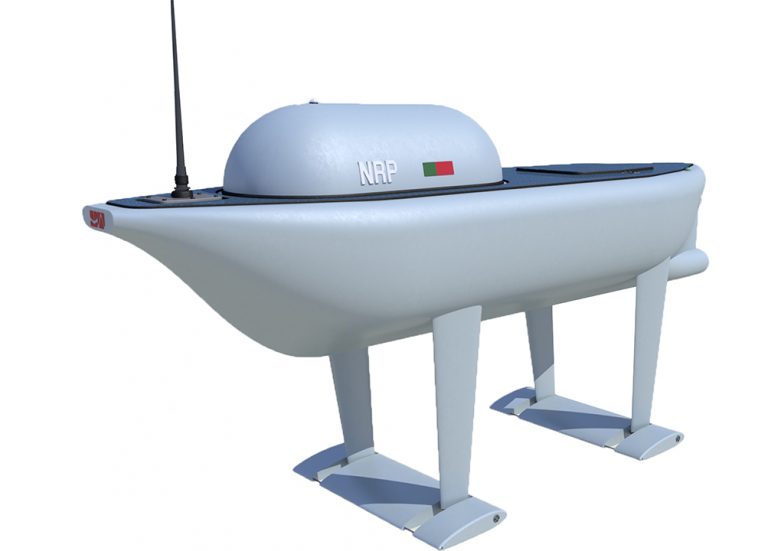The UOPV project aims to develop the prototype of an innovative multipurpose Unmanned Surface Vessel (USV) within the scope of maritime security. It also aims to become a state of the art in the field of new unmanned surface vehicles for maritime safety purposes through the development of an innovative remote positioning control and wave energy propulsion systems using hydrofoils.
For this project, TecnoVeritas has Nautiber, as a partner for the construction of the hull in composite materials. Nautiber is located in Vila Real de Santo António, its main activity is the Glass Fibre Naval Construction, of vessels up to 50m, for the fishing and touristic industries.
The project is supported by Fundo Azul. Know more

WHY DEVELOPING AN USV?
Every day, thousands of ships operate in Portuguese rough waters facing a number of complex maritime threats. To control and assist these activities requires a large investment involving many resources such as vehicles and operators with significant impact on the maritime environment. Therefore, it is imperative to develop a new inexpensive and environmentally friendly means of accomplishing the designated missions. Hence, the development of a new unmanned surface vehicle with zero emission propulsion reduces operating costs while also reducing pollution.
This UOPV intends to improve the national capacity of monitoring and surveillance in the marine environment in remote areas, by increasing the capability of unmanned mobile oceanic monitoring systems. To achieve that, the UOPV may carry a range of different equipment on board such as infrared and High Definition (HD) cameras, sonar, ultrasounds, satellite communicators among others.
The applications of this vehicle are extensive, such as:
- Border and customs control;
- Anti-Submarine warfare;
- Reconnaissance;
- Navigation monitoring in sovereign spaces;
- Fisheries controls;
- Fisheries research and monitoring
- Prevention, reduction and control of marine pollution from ships and ports;
- Navigation safety;
- Maritime rescue.
GOALS
- Develop an unmanned autonomous surface vessel, to patrol the extensive Exclusive Economic Zone (EEZ) of Portugal, and others;
- Develop the technologies associated with remote control and artificial intelligence required by the autonomous operation of the vessel.
MAIN OUTPUTS & RESULTS
- A new concept of a green vehicle using hydrofoil technology with considerable payload, therefore making it useful for special activities;
- A new marketable multi-purpose unmanned surface vessel that will fulfil the needs of several entities with oceanic activities. A device especially relevant for monitoring, patrolling, data collection among many other applications;
- Experimental proof of concept of the hydrofoil system as a propulsion system.
INNOVATIVE PROPULSION
The propulsion relies on an innovative heaving and pitching hydrofoil system that is capable of generate forward thrust when the attached to a floating body.
The hydrofoil propulsion as all the vessel will be controlled remotely to achieve an optimised efficiency. The control system can be divided into two main groups, respectively:
- The remote monitoring, control and communications system

WAYS OF OPERATING
- Station keeping: UOPV will keep the station on a 35m radius. This allows it to act as an untethered buoy, offering great economies.
- Waypoint: can be set or varied at any time from shore. This also means that UOPV knows the “way back home” to the rendezvous point or close to a harbour to be picked up. In this mode, an area of 500 square miles, can be properly patrolled in approximately one week.
- Remote Operation: UOPV can be navigated from a remote location, on board of a vessel or from shore, using satellite communication.
- Autonomous Operation: UOPV operated autonomously, i.e. it can make “decisions” based on an identification of context and artificial intelligence.
TECHNICAL SPECIFICATIONS
- UOPV had its design-oriented to operate during long periods without using fuels, therefore it is adequate for patrolling missions of vast ocean areas without fuel costs and restrictions.
- UOPV is between 6m and 8 m long and 2m to 2.5m of breath, with a draft between 1m and 2m.
- Endurance: >6 months at sea.
- The UOPV is equipped with an integrated hybrid energy and propulsion systems.



